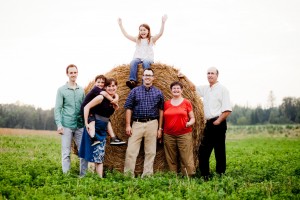Our farm factors sustainability issues into our decisions every single day. Today, as third generation farmers working the same land since 1946, this stewardship is as relevant as ever.
Good food is what binds us together in community and culture, and it’s at the heart of who we all are.
We’re committed to practicing environmentally-sustainable agriculture, creating a resilient food system, and fostering a community around food and farming that supports, learns from, and enjoys each other.
What we do
In the Fields…
- We maintain many natural habitats around the farm including over 70 acres of woodland, shelter belts and grassland, over 2 acres of wetland and marsh area, and 4 ponds
- We use organic practices like crop rotation and cover crops to limit pests and improve soil structure and nutrients, companion crops to encourage biological controls and bees, hours and hours of hand weeding, 100% biodegradable mulches and straw to limit weed germination, natural fertilizers like gypsum, lime, and potassium sulphate to help feed our crops, natural pest controls (spinosad, soaps and kaolin clay), and crop scouting to identify pests early and treat them only when necessary for minimal impacts
- We manage our soil to maximize organic matter and natural water holding capacity meaning that we don’t run fossil-fuel pumps for hours and hours for all of our acres. We only require minimal irrigation for strawberries and raspberries – primarily to frost protect delicate blossoms in the spring.
- We employ only local labour (primarily students each summer) and provide a great working environment with paid breaks, good health and safety programs, WSIB coverage, and complete insurance coverage for our staff, facilities, and products
- When we don’t use an organic products we make that decision based on the long term impact to our land, our health, and the safety of our produce – not just on today’s economics
- We focus on re-using and re-purposing whenever possible to reduce waste.
In the Greenhouse…
- We collect rainwater off the roof and recycle our water through a floor drain system
- We use only organically certified growing media with compost for nutrients
- We use a wood-chip biomass boiler from Biothermic for primary heating and an energy retention curtain that closes at night to trap heat
- We use biological controls – good bugs to eat the bad bugs – to prevent insect problems
- We’re using organic fertilizers and composts to feed our plants
- We clean, sterilize and re-use as much material as possible!
At our Farm Stand and Refreshment Stand
- We’re a plastic bag free zone. Bring your own bag and we’ll fill it or we have an oxo-biodegradable option available
- Our disposable food ware is 100% compostable
- No high-fructose corn syrup beverages or bottled water is sold at our Refreshment Stand!
- We minimize waste by management through our waste through re-using and composting.
Continuous Improvement
Agriculture, like any job, must be treated as a profession if you are going to be successful in the long term – especially if you believe in providing safe, good quality food to thousands of people each year. It requires respect for time-honoured traditions and constant learning about how to make those fundamentals better and safer. We receive 5 different professional publications and attend numerous learning opportunities each year. While these cost us money, it is really an investment in our business and your food. We also belong to numerous professional organizations:
- Ontario Federation of Agriculture
- National Farmers Union
- Canadian Agricultural Safety Association
- Ontario Fruit and Vegetable Association
- ONTRACE – Food Traceability
- Ontario Berry Grower’s Association
- Seeds of Diversity
- Thunder Bay Country Market (Founding Member)
